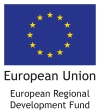ADAPT enabled safer and shorter routes for public archipelago transportation
The system for public transportation at sea differs in Stockholm and Åland archipelago, but project ADAPT tackled the joint challenges in offering a safe, timesaving, and fuel-efficient public transportation at sea.
New and updated hydrology was needed to reach an improved maritime transport system and to reduce its environmental impact. Altogether, there were 46 corridors and nodes identified in the ADAPT project with proposals for adjustments for safer and shorter routes in both Stockholm and Åland archipelagos. Time savings as high as 30 minutes for a single journey was presented, which shows the possibility to decrease CO2 emissions.
The smaller fairways had not been updated for years, so the knowledge of where new and shorter routes could be used had to be ensured. Last time the depths were sounded was 100 years ago – by hand! Now the project did hydrographical surveys of sea floor by modern multibeam laser scanning of about 240 square kilometres seabed in Stockholm. In Åland, more than 100 square kilometres were scanned.
The surveys detected several deviations, and about 60 NtM (Notices to Mariners) were published as the deviations found were considered as immediate dangers. A lot less urgent updates have been introduced to and are implemented in the electronical sea charts. On Åland it led to more than 70 new or adjusted sea marks. Read the full report HERE.
By giving a detailed view also in a wider corridor around the seabed, the surveys resulted in modified routes. The environmental gains focused on reduced fuel use and emissions of CO2, NOx and SOx, but also on reduced backwash along sensitive shorelines.
The main beneficiaries of a more effective public transport are the passengers, as well as the communities and businesses on the islands depending on tourism and visitors. The results are important to leisure boaters to gain safer navigation within the archipelago.
The authorities involved considered the partnership very fruitful. The project enabled people working with waterborne public transportation to meet and exchange experiences, and together they created a toolbox providing useful knowledge for those planning and operating the public transportation in the archipelago.
- 240 km2 laser scanned seabed
- 46 ferry routes can improve efficiency or safety
- more than 100 dangers found
- updated sea charts > increased safety
- improved, safer and shorter routes with lower CO2 emissions
- toolbox for efficient seaborne public transportation management


